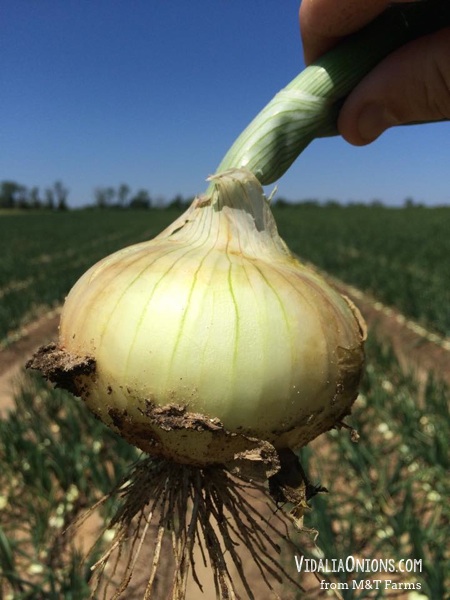
By Clint Thompson
Bob Stafford, manager of the Vidalia Onion Committee in Vidalia, Georgia, believes weather during the growing season has impacted this year’s Vidalia onion crop.
“We planted 9,373 acres and lost some to hail and we lost some to too much water. We had a bad growing season. We’ll have a good promotable supply, but they’ll be a little on the smaller size,” Stafford said. “We’ll have more mediums than normal. The consumers are still going to get a very good product.
“Our crop is generally over 90% jumbos but this time we’re going to have a lot of large-mediums and small jumbos.”
Today is the scheduled packing date for this year’s Vidalia crop. Stafford said the packing date is when you can start using the Vidalia Onion trademark, and it ensures the customers that the onions are mature.
This is the second straight year there has been considerably less Vidalia acreage produced.
“We started downsizing last year so we’ve planted the 9,300 acres for two years. We ordinarily go up to about 12,000 acres,” Stafford said. “What we decided to do, we wanted the same yield off of less acreage. We wind up every year selling between 5 and 7 billion bushels. We just want to get that many off of 9,000 acres. It’s all about yields per acre is what we’re after; higher yields, less acres.”
Stafford is not worried about this year’s market for onions compared to how other commodity markets have dropped amid the ongoing coronavirus pandemic.
“(Florida produce farmers) grew a lot of product for schools and restaurants and so forth. When this pandemic closed them down those products were just left hanging. Our product, there’s been a world shortage of onions because since this pandemic, people are cooking at home and the onion being a staple for the cooking, it’s managed to keep up pretty well with the supply,” Stafford said. “It hasn’t affected us that much. It has affected us some but not as much as some other commodities.”









